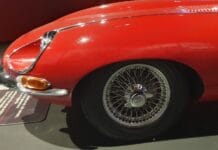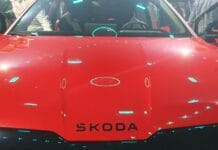We love classic cars. We love their design, simplicity and that unique character that seems to be missing from modern vehicles. But it is rather difficult to keep them on the road. They are unreliable, noisy and not environmentally friendly to say the least. Now Volkswagen has a solution – take a look at this brand new classic – the eKäfer.
Käfer, better known as Beetle out of Germany, was actually the first car of Volkswagen. First examples left the factory back in 1938. It was actually Hitler’s idea to build a “people’s car” that would be affordable to everyone and could take advantage of the new autobahn system. Although WW2 halted the production of Käfer, it was resumed afterwards, which allowed Beetle to become one of the most iconic cars of all time.
Now Volkswagen Group worked together with ca company, called eClassics, to bring eKäfer to life. By the way, Käfer is the original German name of this model – if you read “Classic Beetle” or “Käfer”, know that it is one and the same model. And people love them – old Käfers look very unique in today’s traffic. However, keeping them on the road is not for everyone.

Old cars require extensive care. Oftentimes they are unreliable and too noisy. They also pollute quite a bit more than modern vehicles. And that’s where eKäfer comes in – it is an old design with modern technology. eKäfer is reliable, cheap to maintain (probably expensive to buy though), quiet and can use privileges of electric cars, which include special parking spots, exemptions from road taxes and congestion fees, cheaper insurance, special lanes and many more.

eKäfer got internals from the new e-up! And so it is driven by the same 61 kW motor, drawing power from 36.8 kWh batteries, built into the underbody of the car. These lithium-ion batteries should be very reliable, because Volkswagen offers 8 years or 160,000 km warranty for them in the new e-up!

Volkswagen doesn’t think that eKäfer should live exclusively in the city – its 200 km range allows for short trips behind the city walls and it can be charged from flat back to 150 km range in just one hour. eKäfer is very aerodynamic and weighs 1,280 kg – a bit more than the original.

It should be fun to drive too. eKäfer accelerates to 50 km/h in just under four seconds and to 80 km in just over eight seconds. Its top speeds is 150 km/h, which means it can keep up with highway traffic. Of course, the faster you go, the quicker the batteries are drained, but at least you can be confident in overtaking.

eKäfer has an additional trunk, where the classic car had its boxer engine. Another interesting feature – eKäfer’s charging port is tastefully hidden behind one of the tailights. However, other than pronounced sills and the lack of tailpipes, eKäfer looks exactly like the original.

Volkswagen eKäfer will make its official debut at the International Motor Show (IAA) in Frankfurt. And it will not be the only electric classic in the future. Thomas Schmall, Member of the Board of Management of Volkswagen Group Components, said: We are already working together to prepare the platform for the Bus. An e-Porsche 356 could also be pursued in the future.”
Other interesting reads:
Volkswagen Plattenwagen – one of the earliest Volkswagen vehicles;
EA489 Basistransporter – Volkswagen you probably don’t know;
Electric trucks are far from new – they were delivering goods a hundrend years ago;
JAWA 750 – did you know JAWA made cars?
Why modern cars have so much plastic under the bonnet?




